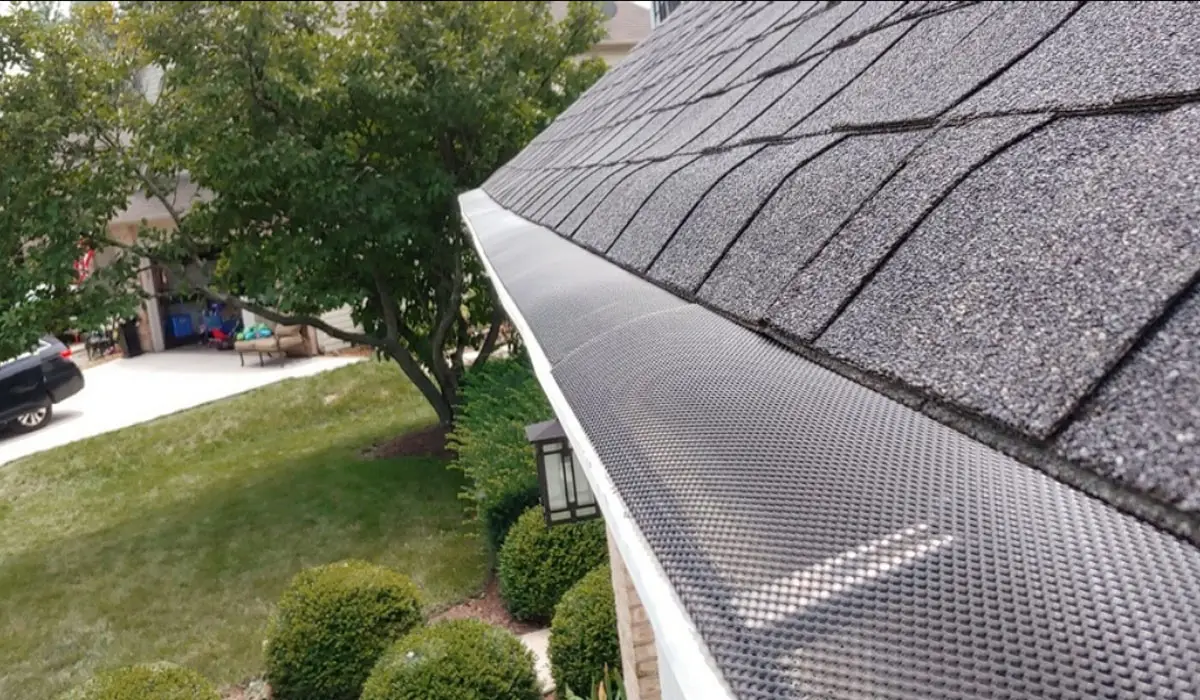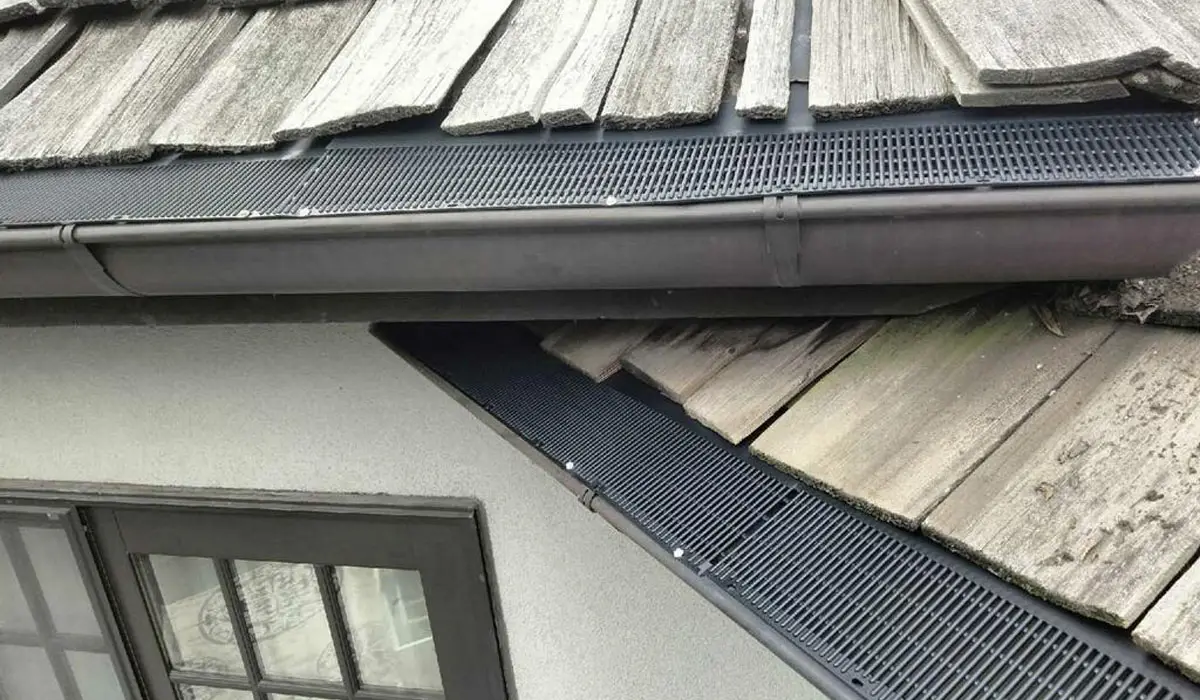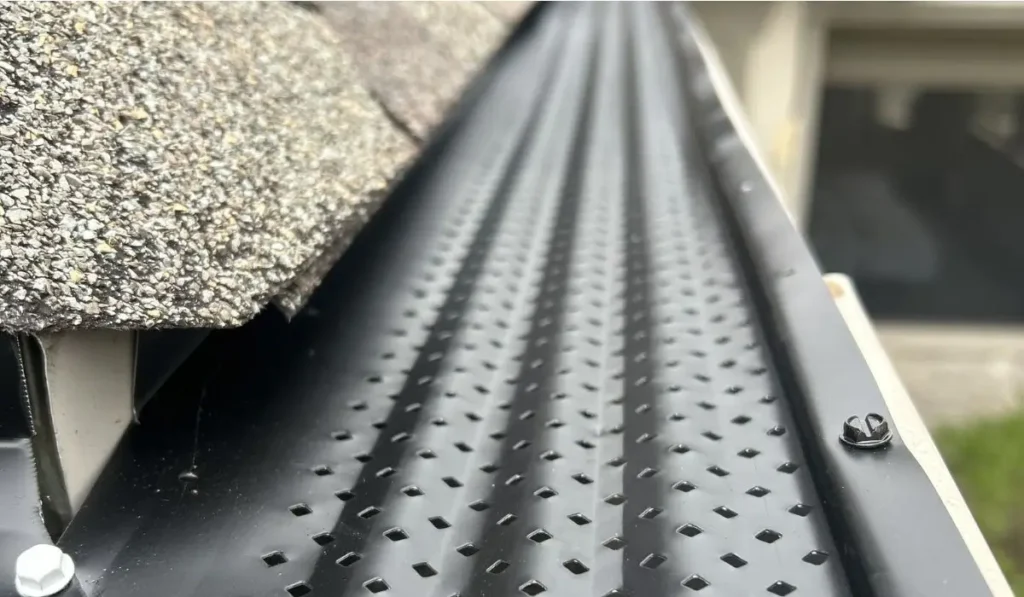Ensuring Proper Function and Maintenance of Your Gutter Guard System
Many homeowners invest in gutter guards thinking they’ve solved their gutter maintenance for good. Gutter Medics often encounters this assumption: install guards and forget about leaves, blockages, or cleaning forever. But like any system protecting your home, guards still require attention and regular performance checks. If left unchecked, they can quietly fail and cause issues like fascia rot, roof leaks, or even foundation damage during heavy storms.
A properly functioning gutter protection system does more than keep leaves out. It preserves the health of your roofline, walls, basement, and even your landscaping. That’s why seasonal review and gutter inspection are essential—even for homes with guards in place.
Not sure if your gutter guards are helping or hurting?
Let Gutter Medics check and optimize your system. Protect your home before the next storm hits. Call (630) 922-3131 to speak with a trained local technician today.
What Gutter Guards Are Designed to Do?
Guards work best when they’re well-fitted, well-maintained, and appropriate for your home’s roof type and environment. Their core job is to reduce how often gutters need manual clearing.
Block Leaves, Debris, and Critters
🍁 Guards act as the first defense against nature. Without them, leaves pile up and block water flow. But even with guards, certain types—like foam or brush styles—can trap shingle grit and break down over time.
🐿️ Squirrels, birds, and even bees have been known to lift or nest under loose guards. Once that happens, the system loses its integrity and may require repair or a professional gutter cleaning service to restore full functionality.
Keep your system performing like new with expert help from our team—visit our page on how to maintain your gutters.
Maintain Water Flow to Downspouts
💧 Water should move from your roof to your downspouts with no detours. Overflowing edges, slow drainage, or leaks near joints all signal performance issues.
An industry survey found that over 60% of homes with improper guard installation still experienced overflow and water damage. This proves that “installed” doesn’t always mean “functioning.”
Reduce Manual Cleaning
A strong-performing gutter protection system will cut down manual cleaning from 3–4 times a year to just once—or even less. If you’re still on a ladder every fall, your system isn’t working efficiently.
Warning Signs Your Guards Might Be Failing
Even premium guards can underperform without upkeep or inspection. These warning signs can help you spot trouble before damage spreads.
Overflow During Light to Moderate Rain
🌧️ Gutters should only overflow in extreme weather. If water spills over during a mild or average rainfall, there’s a problem—often tied to clogged internal channels or warped guard covers. Left unchecked, clogged gutters can create enough pressure to damage roofing materials and siding.
Hydrostatic pressure from backed-up gutters can force water under shingles, leading to attic leaks and insulation saturation.
Visible Debris Stuck in or On the Guard
🌿 Leaves sitting on top of mesh or reverse-curve guards block water from flowing through. And while it may not look like much, even a thin layer of decomposing debris can create ice dams in winter.
When those layers freeze, water can back up into the roofline, causing rot, mold, or costly drywall damage inside the home.
Water Dripping Behind Gutters
🏠 When water drips behind your gutters, it often indicates that the guards or fasteners have shifted. Over time, this moisture can destroy fascia boards and even attract carpenter ants or termites.
If you notice paint peeling or dark streaks behind the gutter line, schedule a professional gutter inspection right away.
When damage is already affecting gutter performance, it may be time to replace your gutters.

Worried your guards might be causing hidden damage?
Our team catches problems early and helps prevent costly repairs. Contact us today to book your expert inspection and restore your peace of mind.
How to Inspect Gutter Guards Safely?
You don’t have to climb on your roof to know something’s wrong. Many issues are visible from the ground—if you know what to look for.
Visual Check From the Ground
Use a smartphone camera or binoculars to scan your roof edge. Look for:
- Debris caught in corners or seams
- Guards that appear warped or uneven
- Signs of plant growth or moss buildup
Watch the gutters during the next rain. If water spills over the edge like a waterfall, it’s time for deeper inspection.
Ladder Use and Safety Guidelines
If you decide to check more closely, always use:
- A ladder with stabilizers
- Non-slip gloves
- A second person to hold or spot
Inspect key junctions, downspout inlets, and areas beneath tree branches. Never lean far to either side—especially on multi-story homes.
When to Call a Professional
Spotting sagging gutters, bird nests, or soft, water-damaged fascia often points to deeper issues developing behind the scenes. These warning signs should never be ignored.
Gutter Medics offers safe, affordable inspections performed by fully insured, in-house technicians—not subcontractors.
Types of Gutter Guards and Their Maintenance Needs
The type of gutter guards installed on your home directly impacts how often inspections or cleanings are needed. Some materials resist debris better than others, while certain designs tend to fail faster in high-leaf environments or humid climates.
🧼 Mesh Gutter Guards
These guards use a fine stainless steel or aluminum screen to keep out leaves, pine needles, and even roof grit. They’re widely used because of their versatility and durability.
- Best for homes in suburban or light tree coverage areas
- Allows water to pass while blocking small debris
- Requires once-a-year brushing or low-pressure rinsing
- Can accumulate surface buildup from pollen, dust, or sap
When properly maintained, quality mesh guards can last 10–20 years without needing replacement.
⚠️ Foam Gutter Guards
Foam inserts sit inside the gutter trough and block debris from entering by absorbing water through the foam itself. While they may appear cost-effective up front, foam guards have known durability issues.
- Easily saturated and slow to dry out in humid or shaded areas
- Prone to algae growth, mildew, and even insect nesting
- Can deteriorate after two to four years, depending on exposure
- May block water flow if compressed or displaced by snow/ice
Foam is often used on rental properties or homes in low-debris zones, but it rarely performs well in areas with seasonal leaf fall or heavy rain.
🚫 Reverse Curve Gutter Guards
Reverse curve systems feature a curved edge that guides water into the gutter while deflecting leaves over the edge. They’re mounted above the gutter and are often marketed as “maintenance-free.”
- Works better on steep-pitch roofs for faster runoff
- Vulnerable to leaf accumulation along the curve
- Requires bi-annual edge clearing to maintain flow
- May struggle in heavy downpours or when misaligned during installation
Though helpful in theory, many reverse curve designs fail to account for windblown debris that settles along the lip, making gutter guard maintenance still necessary.

Gutter Medics’ Approach to Gutter Guard Maintenance & Replacement
With more than 20 years serving the western suburbs—and featured on The Weather Channel for ice dam mitigation—Gutter Medics is built on real-world experience and long-term trust.
🧽 Cleaning Without Removal
Our team uses custom tools and low-pressure air cleaning to remove debris from around and under guards without detaching them. This saves labor time and reduces the risk of disturbing surrounding shingles or fascia.
You can view our cleaning services here.
🛠️ Upgrading Poor-Quality Guards
We regularly replace low-grade DIY guards with professional-grade systems that match your roof style, slope, and drainage needs.
Homes with older foam or brush inserts often benefit from mesh upgrades or integrated gutter screen systems. See our screening options for more info.
❄️ Seasonal Inspection Packages 🍂
Spring pollen, summer storms, fall leaves, and winter ice all impact gutter health differently. Our year-round packages ensure your gutter guard maintenance is aligned with the season—keeping your home protected no matter the weather.
Final Tips for Keeping Your Gutter Guards Performing Well
✅ Keep trees trimmed at least 6 feet away from the roof edge
✅ Check valleys and roof edges after storms or heavy wind
✅ Flush downspouts with a hose twice a year
✅ Use splash blocks or extensions to redirect drainage
✅ Schedule a professional checkup every 12–18 months
The average home collects over 600 gallons of water for every 1 inch of rainfall. If your guards are compromised, that’s hundreds of gallons potentially flooding your soil, siding, or basement.
Why Chicagoland Homeowners Trust Gutter Medics for Gutter Guard Care?
Gutter Medics is a family-owned company proudly serving DuPage, Kane, Kendall, Will, and Cook Counties. Every technician is fully insured, highly trained, and committed to doing the job right—even when others miss the details that matter.
Homeowners throughout the western suburbs turn to us for reliable gutter guard inspection, repair, and cleaning. Thousands have already seen the difference. Don’t leave your home’s protection to guesswork—see what our customers are saying and choose a team that treats your home like it’s their own.
Not sure if your gutter guards are helping or hurting?
Let Gutter Medics check and optimize your system. Protect your biggest investment with honest answers and expert care.
Frequently Asked Questions
Your gutters are in charge of water management. They effectively channel water flow from your roof through the downspouts and direct it to appropriate areas outside the home during a storm. Your roof can collect many leaves and other debris without a gutter system, causing water to stagnate and overflow.
When you don’t clean your gutters, the downspouts can become clogged with leaves, debris, or other debris. This blockage causes standing water to accumulate and eventually overflow. Leaves that clog your gutter can begin to decompose and eventually rot if left unattended.
Install splash guards and mesh – If you have a steeply pitched roof, the water may be moving so quickly that it splashes over the gutters. Installing an L-shaped splash guard to prevent water overrun during storms can help.

